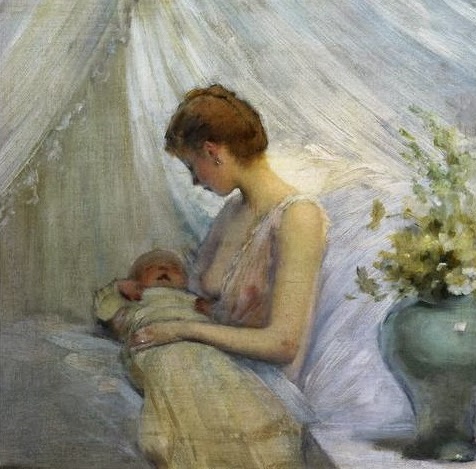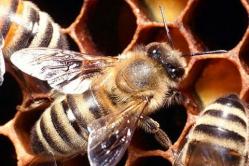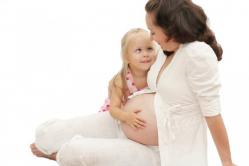Antipyretics for children are prescribed by a pediatrician. But there are emergency situations with fever when the child needs to be given medicine immediately. Then the parents take responsibility and use antipyretic drugs. What is allowed to be given to infants? How can you lower the temperature in older children? What medications are the safest?
Feeding a child is one of the most important physiological and emotional events in the life of any woman. Breastfeeding allows a young mother to quickly recover from pregnancy and childbirth, provide her baby with high-calorie and safe food, and achieve full psychological contact with the child.
Humans belong to the class of mammals, so feeding a newborn with breast milk is natural for him. However, with the development of society, women demanded more and more freedoms and equality with men. At the same time, the feeding process constantly faded into the background as an obstacle to the realization of a woman’s dream of freedom.
There was a gradual transition from wet nurses and cow's milk to various formulas, and most women lost their breastfeeding skills. Even in our time, poor preparation of the expectant mother at the level of antenatal clinics and mothers’ schools does not give our mothers the ability and tolerance to feed their baby until at least one year. There are many reasons for early cessation of breastfeeding, but most women primarily experience various pain sensations during lactation and feeding the baby.
What diseases can cause pain?

In 90% of cases, painful sensations in the mammary gland during lactation and directly during the procedure of feeding the child are a consequence, and subsequently, of lactation mastitis. The causes of this disease lie in the inability of young mothers to put their baby to the breast correctly, failure to follow the simplest rules of pumping, and neglect of personal hygiene during feeding.
The very process of development of pain in the mammary gland of a nursing woman is a certain vicious circle. As a result of poor breast hygiene and feeding techniques, abrasions and cracks form on the areola and nipples of the mammary gland, which naturally cause pain when the baby is latched. The mother spares herself and leaves the breast insufficiently emptied, and the child hungry. When there is an excess of milk in the mammary gland, the milk ducts become blocked with a “creamy clot,” which leads to further overload of the breast with milk.
Liquid fractions of breast milk, in search of a way out, sweat into the interstitial space of the mammary gland, which increases its swelling and increases the pain syndrome during breastfeeding. The baby's feeding is reduced, the pumping process is left to chance, and the vicious circle is closed. The scheme of events is quite simple:
- the appearance of various skin disorders in the area of the areola or nipple of a nursing woman;
- the emergence of a lactostasis clinic;
- accession of infection through skin damage and development;
- If lactostasis and mastitis are not treated in a timely manner, a painful inflammatory process in a woman’s breast may transform into a mammary abscess.
If the first two points of this classification require only care, careful pumping, treatment with herbal preparations such as medicinal teas, then when an infection occurs and inflammation develops in the diseased gland, quite powerful drug therapy is required, including antibiotics, hormones, vitamin complexes and appropriate laboratory diagnostics .
Treatment and prevention measures for pain
The main method of treating pain during breastfeeding. In this case, the woman herself or together with a medical professional must develop the correct breastfeeding technique, control the accuracy of the baby’s nipple latching, practice the position of her body and the position of the baby at the time of feeding.
It must be remembered that in case of pain it is necessary to empty both mammary glands. Feeding from a painful breast begins from healthy tissues to the affected ones; the same technique must be followed when expressing. Note that the peak of hormone production occurs in the early morning, of course, and the amount of milk in the mammary gland at this time is the largest. If at a given period of time the child does not show any particular feeling of hunger, then the baby can be supplemented with expressed milk throughout the day.
You should know that excessively forceful pumping from a diseased gland often leads to increased production of prolactin, the hormone responsible for the growth of lactation. At the same time, the development of the process of hyperlactation begins in the woman’s body, which, due to inflammatory processes in the mammary glands of the nursing woman, leads to increased swelling and greater severity of pain during feeding.
The process of latostasis usually lasts for 2-4 days. If after this time the pain remains, you should think about the disease progressing to lactation mastitis. Treatment for such a disease usually begins only after an accurate diagnosis has been established. The main method for this is ultrasonographic examination of the breast and consultation with a surgeon.
When the diagnosis of lactation mastitis is confirmed, a woman is usually prescribed anti-inflammatory drugs, antibiotics, and drugs to reduce lactation. Antibiotics are most often prescribed no earlier than the 5th day of the disease, since in case of lactation mastitis they have practically no pronounced therapeutic effect, but can contribute to the transition of an acute condition into a chronic pathology, which leads to difficulties in further treatment.
Pain in the mammary gland when feeding a child can also be caused by completely extraneous factors. An example of this is banal intercostal neuralgia, which, if the mother’s position is incorrect during feeding, leads to irradiation of pain into the nerve endings of the mammary gland. However, external problems with pain during breastfeeding account for no more than 7-9%.
The basic rule for any young mother who experiences painful sensations while feeding her baby should be to refrain from self-medication and immediately seek help from a doctor. Pain during feeding and pumping almost always indicates a serious inflammatory process in the mammary gland. Timely seeking help from a specialist will help you avoid various complications, including the need for surgical intervention.



